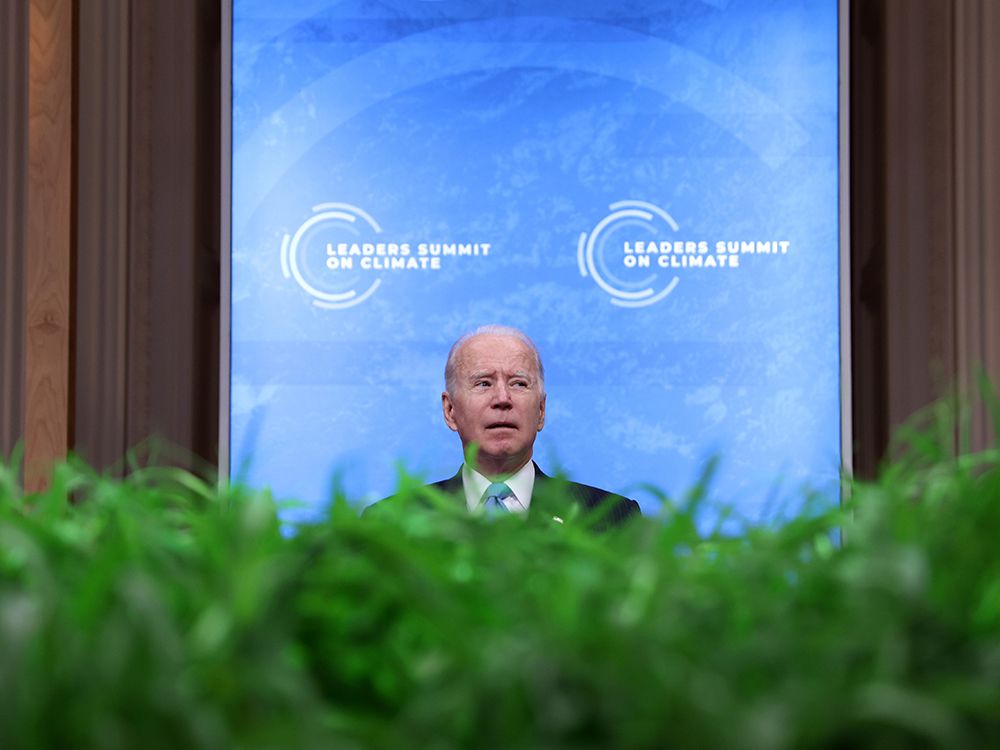
It’s good to have personal goals, like getting in shape after the holidays.
It’s also important to have realistic objectives.
Canada’s new target to cut greenhouse gas emissions by up to 45 per cent by the end of this decade, while laudable, lacks some key information to determine if it’s plausible.
For instance, how are we going to get there in just nine years?
What kind of government policies, beyond those in place today, will be needed?
And how will it impact Canadians?
“I’m more than a bit concerned that governments, in their zeal to beat their chests … are stretching out and quoting targets they don’t have any idea of how they are going to meet,” said retired Syncrude president Jim Carter, who served as chair of Alberta’s Carbon Capture and Storage Development Council.
“We are moving far too fast setting targets without understanding the broader implications to our Canadian economy, for one thing, but also recognizing the role science and engineering play in all of this. There are limitations.”
As part of Canada’s commitment under the Paris climate agreement, the country agreed to lower its emissions 30 per cent below 2005 levels by 2030.
Earlier this week, the new federal budget showed Canada is on track for a 36 per cent reduction, thanks to an array of new policies, including the Clean Fuel Standard and a higher carbon price.
Now, suddenly, a new target has appeared: a 40 to 45 per cent reduction in Canada’s emissions by decade’s end.
This will have implications for many parts of the economy, including the oil and gas industry, the largest emitting sector in the country.
“When goals get put out like this, it’s really difficult to say what are the actions it takes to get there,” said Tamarack Valley Energy CEO Brian Schmidt, stressing the industry wants to work with governments to reduce emissions.
“It lacks a cohesive plan to get there and that has been the problem with any target — and to be honest, that’s why there are consistent targets missed.”
Experts say it’s not impossible to reach a new GHG emissions destination.
Yet, if history is a measure, it won’t be simple.
“It’s definitely attainable,” said Andrew Leach, University of Alberta energy and environmental economist. “The question is whether we will have the policy push to get there. The shorter the time frame, the harder the choices.
“It is important to have ambitious goals. The problem comes in when we haven’t really factored in just how ambitious those are, and how they conflict with other constraints on us.”
In 2019, Canada’s oil and gas sector was the source of 26 per cent of all emissions in the country, just ahead of the transport industry.
In the past decade, oilsands producers have made progress in lowering their average emissions per barrel by becoming more efficient, embracing technology and spending millions of dollars to make it happen.
The average emissions intensity from the oilsands has dropped by 21 per cent since 2009; with current innovations being worked on, they could fall another 20 to 27 per cent this decade, according to the Canadian Association of Petroleum Producers.
However, a
s total oilsands production is expected to increase, its overall emissions are also projected to rise by 2030, according to federal estimates.
Technology will be key to closing this gulf, such as the development of carbon capture utilization and storage (CCUS) projects.
“The industry is capable of making material large-scale reductions. It’s a question of time and money,” said Kevin Birn of energy consultancy IHS Markit.
“How do you bend the curve more materially, sooner, while preserving the competitiveness of the sector, because the world will be continuing to use the product they’re producing.”
Federal Environment Minister Jonathan Wilkinson said Thursday the country needs to commit to doing more on the climate front.
The federal government isn’t looking to change the carbon price — already heading up to $170 a tonne by 2030 — but some regulations could become more ambitious, such as setting methane reduction targets out to the end of this decade, he said.
In the United States, President Joe Biden also announced a new goal of cutting emissions by 50 to 52 per cent by 2030.

In an interview, Natural Resources Minister Seamus O’Regan said some existing measures, such as the Clean Fuel Standard and making investments to promote hydrogen development and CCUS, will allow for further progress in Canada.
“It is very attainable,” O’Regan said of the new target.
“There will be things that will perhaps allow us to be more ambitious in the next 10 years … but for the vast majority of it, we do have a plan.
“We felt very comfortable about reaching our 36 per cent target. We felt we could be more ambitious.”
Environmental groups believe reaching the new goal will require additional steps, such as adopting tougher fuel standards for vehicles and taking additional measures that would affect the oil and gas industry.
“If we want to get to 45 per cent, it means not expanding oil production and that is going to be a big political battle,” said Keith Stewart, Greenpeace Canada’s senior energy strategist.
However, there are hundreds of thousands of energy jobs at stake in these decisions, as well as a huge resource in Canada that the world is going to need for decades to come.
This doesn’t mean Canada shouldn’t try to keep lowering emissions. It must.
But the government has to come up with specific plans and clear-eyed policies if these new targets are to be taken seriously.
“I am very skeptical. I don’t think we have had enough discussion around how those targets can be accomplished,” concluded Carter.
“All those things have to be examined before you can take seriously any commitment that might be made.”
Chris Varcoe is a Calgary Herald columnist.
You can read more of the news on source
